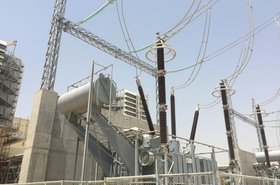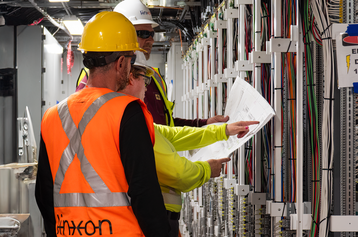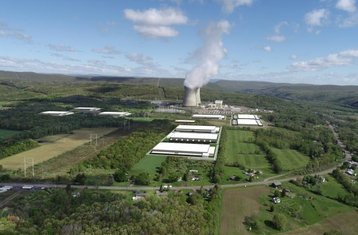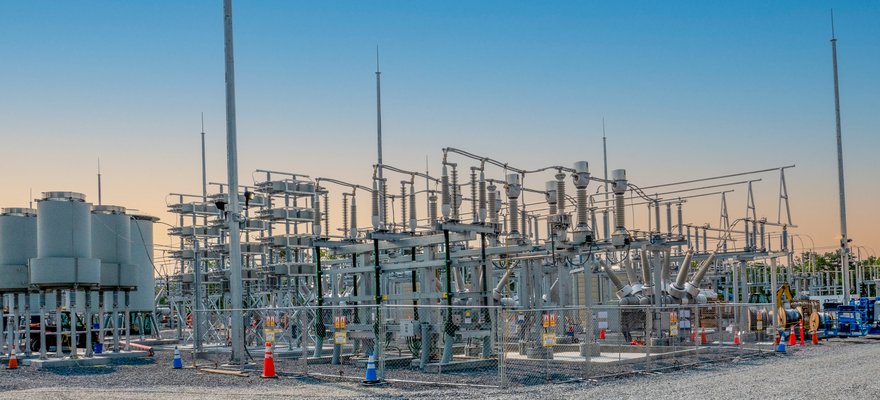While many companies and industries are already well down the road to decarbonization, many more are discovering that the task will be a lot bigger than they had initially bargained for.
The trouble is that fossil fuels are just too efficient: they can efficiently power anything from a motorcycle to a jet fighter. By-products of oil can be molded cost-effectively into almost anything you can imagine in the form of plastic. Those fossil fuel by-products can be found in lubricants, clothes, carpets, fertilizers, adhesives, paints, furniture, insulation, detergents, electronics, bottles, you name it. Moreover, in most cases, there are as yet few viable like-for-like low-carbon alternatives.
And that’s before we get to the copious volumes of fossil fuels required in the production of steel, glass, and concrete.
As economist Ed Conway has noted, “Across various sectors, businesses are realizing that getting to net-zero might be considerably harder than they initially assumed.”
In other words, net-zero isn’t going to be a simplistic “in one bound they were free” kind of story. It will be a long, hard slog in which both small steps and large will need to be made. That will require both will and know-how, especially if missteps are to be avoided.
The journey, inevitably, starts with power. But, says Nicolas Sanloup, president and managing director of Linxon Americas, because organizations of all types throughout the world are rushing to exit from fossil fuels and carbon-generating activities, bottlenecks are already arising that are limiting the pace of progress before the journey has barely even begun.
“Following on from Covid and the onset of international conflicts we are seeing all industries, not just data centers, trying to double down on renewable power – offshore wind, solar projects, battery energy storage, and utilities trying to improve the resilience of the grid. It’s global, in almost every country around the world,” he says.
“But what we’ve seen is that decarbonization, regardless of the industry, is being held back by the sheer volume of investment that’s being made. The capacity of manufacturers is now a limiting factor.”
Indeed, he adds, the factories of major suppliers are already working at full capacity, and lead times for some key products that used to be an uncomfortable eight or nine months are now running to three or four years.
What data center operators – and other organizations with tight schedules for achieving their net-zero pledges – need, therefore, are major partners that can cut through the logjams to deliver the power equipment they need, with the heft to line up orders well in advance, ensuring that they are supplied what they need when they need it.
Linxon is a global turnkey solution provider, backed by engineering services specialist AtkinsRéalis and the global technology leader Hitachi Energy. It provides reliable power solutions to heavyweight industrial sectors, including power utilities, transport, and, of course, data centers. Its designs and services encompass substations, battery energy storage, and renewable energy systems – both onsite for data center clients and the utility sector.
However, only a few connected power hardware suppliers cater to the data center sector, and Hitachi Energy is among them. Linxon and Hitachi Energy work closely together to provide more sustainable products suited for this specific application.
Renewable power drive
What the majority of power clients want today, says Sanloup, is turnkey solutions, but solutions that are future proofed as they shift towards more renewable power and reductions in greenhouse gas emissions.
“I would say that there’s six major ways to support that. First, is by getting clients as close as possible to renewable sources, helping them to develop partnership agreements – power purchase agreements (PPAs) – where possible; demonstrating how the data center can be directly connected to renewable energy sources,” says Sanloup.
In most instances, that means wind and solar, but it could also mean geothermal and hydroelectric. Some new data centers that Linxon has been involved with are taking power from nearby nuclear plants, too, while hydrogen power is also on Linxon’s radar.
Second on the Linxon roadmap is to make the data center buildings that bit more efficient, reducing their carbon footprint with different materials.
“Number three, we’re trying to use more natural cooling, as the cooling system is probably the biggest data center impact on carbon emissions. We’re looking at the right balance between cooling and heating, taking into account the location and the power that’s being used,” says Sanloup. That doesn’t just mean free-air cooling, where possible, but also seawater and other natural resources, depending on where the data center is located.
The other three factors, adds Sanloup, relate to the management of the HVAC system, backup power, and better energy storage, which is a particular in-house strength that Linxon can bring to bear.
“We are an asset-owner investor for backup power. We can operate them in order to support customers in the data center space, taking away another management and balance sheet overhead. We analyze what is being built and how we can help optimize the usage of assets. We plan that upfront, and can operate assets for customers, helping them make the right decisions to optimize usage and efficiency of the assets they’re building,” says Sanloup.
Moreover, while battery technology might not be able to run a data center for days at a time at the moment, as diesel backup generators can, Linxon’s battery solution can provide backup for two to four hours now, potentially going up to between eight and ten hours in the near future. That ought to cover pretty much all but the direst eventualities and, although it does come at a cost, Sanloup foresees that cost quickly coming down.
Indeed, they can also be put to work in various ways, either to cut costs or generate revenue. The extra capacity means that they can be used to charge up when (say) wind, solar, and other forms of renewable power are abundant and cheap, as well as being used to provide grid-balancing and other services back to the grid. “That's why it goes back to the first point on the roadmap: you need to partner with proper renewable energy providers,” says Sanloup.
Sustainable switchgear
There are developments across the power infrastructure of the modern data center that will help drive both efficiencies and decarbonization.
For example, Linxon is rethinking the substation of the future, beginning with phasing out the use of sulfur hexafluoride (SF6), which is used throughout the power industry as an insulating medium in switchgear.
SF6 is a potent greenhouse gas with a global warming potential over 23,000 times that of carbon dioxide (CO2). It is used sparingly and with caution due to its efficiency and necessity in certain applications, including in the power sector.
Aware of its environmental implications, Linxon is committed to phasing out SF6 from substations and other electrical products it supplies. Like many others in the industry, Linxon is continually exploring eco-efficient alternatives such as those in Hitachi Energy's EconiQ™ high-voltage portfolio.
Linxon’s partnership with Hitachi Energy will play a key role in the adoption of SF6-free equipment. For example, Hitachi Energy partnered with National Grid in the UK on the world’s first replacement of SF6 in installed high-voltage gas-insulated lines (GIL). The innovation called EconiQTM retrofill used an eco-efficient gas mixture to swap out SF6 at the Richborough, Kent substation with minimum changes to existing equipment while significantly improving environmental and life cycle performance – an environmental win-win.
Linxon’s collaboration with Hitachi Energy will enable it to help data center operators shift away from SF6 in their substation and switchgear equipment. “We are working with Hitachi Energy on these projects and, indeed, implementing the world’s first 420-kilovolt substation with 100 percent SF6-free equipment. That’s just one change we’re making.”
“The second is the type of system being used that combines different technologies such as air- and gas-insulated switchgear systems to create a hybrid solution that enables us to minimize the usage of SF6, reduce the concrete foundation required, decrease the cost of construction, and lower overall emissions throughout the life cycle of the equipment – by 40-to-50 percent in certain cases,” says Sanloup.
Linxon and Hitachi Energy joining forces to work on removing SF6 from switchgear is just another example of the highly technical work that needs to be done – and is being done – across the economy to reduce greenhouse gas emissions.
It may not catch the attention of road-closing campaigners (or even Ed Conway) but it is the kind of constructive technical development that will bring net-zero that little bit closer, helping data center operators achieve their aggressive sustainability targets.
More...
-

Substations planned for nuclear-powered Pennsylvania Bitcoin data center
Susquehanna project underway
-

Microreactors: Is the next big thing even smaller?
Nuclear SMRs don't look so marvellous any more




